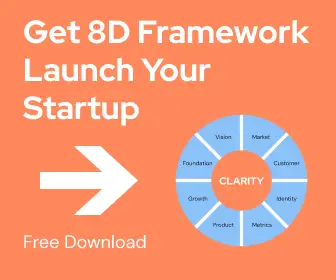You know your brand should send a message. You know your brand should communicate a vision and a philosophy. But let’s face it – “brand voice” just sounds like an influencer buzzword now.
How do you actually create a brand voice that will help you sell your products?
Enter Nike, a brand that chose one theme and built one of the most successful clothing companies in the world around it – Becoming an athlete and striving for self-improvement.
Here’s a case study on Nike’s business success.
Nike’s brand equity: Just A Logo on a Shirt, or Something More?
Ever wondered why a simple logo on a shirt makes the shirt go from $3 to $30? For that, you can blame brand equity. Brand equity is simply the value that a name holds and it’s a huge chunk of Nike’s competitive advantage.
That swoosh isn’t just a logo; it’s a symbol, a status. Nike and the “Swoosh” logo are recognizable worldwide and you might be wearing a Nike product right now as you read this (Just guessing, no one is watching you, don’t worry).
In your business, you should be focused on growing the value associated with your name. This usually means dominating your niche and becoming known as an “expert”. Here’s how Nike did it.
Nike’s brand image: How to Make Millions By Telling Your Story
Have you noticed how every time you see a Nike ad, there’s always a pro multi-trillion dollar per week athlete? While every Nike ad is obviously different, they’re still all pretty much the same. And there’s good reason for that.
Nike’s brand image screams perseverance, hard work, and fulfillment. I mean, Nike is literally the Greek goddess of victory.
They carefully choose the exact emotions that they want to make you feel so you can buy their products. Here’s how they did it:
- Emotional Appeal: Nike often focuses on stories of athletes overcoming adversity, pushing their limits, and achieving greatness. They associate those beautiful feelings with their brand. What emotions do your customers need to feel in order to buy from you?
- Credibility: Featuring real athletes lends credibility to their messaging. If Michael Jordan tells you that you can achieve anything you want if you work really hard, you’re like “Okay, MJ, you know what, I believe you.”
- Social Issues: Nike readily jumps on topics like racial equality, gender rights, and environmental sustainability. How nice do you think that makes them look in the public eye?
- Tales of Everyday People: Yes, the credibility is high when Michael Jordan tells you that you can achieve anything you ever dreamed of. However, if someone who’s just like you, but achieved what you want to achieve tells you that, it’s a whole next level of credibility.
Remember: Always think about what you’re making your potential customers feel and stir up those feelings consistently.
Nike’s Most Famous Collaborations: What can you learn from it?
I think this goes without saying: Nike’s partnerships with sports stars and fashion designers have been extremely important to the brand.
- Michael Jordan: The Jordans and the “Jumpman” logo aren’t just shoes and a stickman. They’re a cultural phenomenon. Air Jordan transformed the sneaker culture by turning athletic shoes into streetwear shoes. This cultural transformation created many loyal fans (read – an opportunity for premium prices)
- Tiger Woods: Just like Air Jordan for basketball, the Tiger Woods brand created a loyal following in golf (premium pricing). Fans didn’t just buy Nike golf products; they bought into the story of hard work, dedication, and excellence that Tiger embodied.
See the pattern? Associating yourself with a credible person also gives you more value. We are the average of the five people we hang out with most. I guess Mom was right, as always…
Think about who you can collaborate with to increase your value. It doesn’t have to be a big name like Jordan. If I were you, I would try to associate myself with the people who are seen as experts in my niche.
Nike’s Sustainability Efforts
A whopping 72% of consumers prefer to buy from companies that share their values on sustainability and social issues. Although sustainability might seem meh at your stage in business, it’s important to keep it in mind for the future. This is how Nike does it:
- Move to Zero (2023): As people are waking up to many of the injustices of the world, there’s a growing demand for eco-friendly and ethically made products. So, Nike is aiming for zero carbon and zero waste. This doesn’t only enhance their reputation but also saves the world bit by bit.
Famous Marketing Campaigns
As you read about these campaigns, notice (steal) three important marketing strategies. Come on, you can always “borrow” someone’s thought process…
- As the years pass, inclusivity becomes more and more important.
- Every campaign is trying to make the customers feel something (inspired, motivated, accepted, cherished). They don’t just tell you about their products, they tell stories that connect with your emotions and inspire you to be your best self.
- They are always trying to get more and more people into sports and into their products.
- Just Do It (1988): We all know about this classic, but let’s briefly explain it again. This campaign impacts your emotions by promoting determination, ambition, and self-improvement. By investing in Nike, you’re investing in yourself (and watching your bank account go down)
- Dream Crazy (2018): A campaign that shows the power of taking a stand on important social issues. It featured Colin Kaepernick, who protested against racial prejudice and police brutality. Not every campaign needs to directly sell your products, some campaigns can be run to make you look better. In our world of small business owners, creating an amazing blog has a similar effect. Click here to learn how to paint your business in a better light.
- How We Do (2018): An inclusivity campaign that shows a range of all ethnicities, body shapes, and ages. By encouraging everyone to get into sports, they did a beautiful thing for society and got more people to buy their products.
- Play New (2021): Encouraging everyone, even those who don’t see themselves as athletes, to try new activities and find joy in movement. The message is clear: if you have a body, you’re an athlete. This campaign embraces imperfection and celebrates trying new things, appealing to a broader audience through inclusivity and emotional resonance.
- Just Do It (1988): We all know about this classic, but let’s briefly explain it again. This campaign impacts your emotions by promoting determination, ambition, and self-improvement. By investing in Nike, you’re investing in yourself (and watching your bank account go down)
Behind the Scenes of the Swoosh: Unethical Practices
Yes, you guessed it. Nike is also not a perfect little angel. They also have skeletons in their closets.
They’ve been involved in class action suits over non-biodegradable materials, which got dismissed in court.
In 2019, Nike received the worst rating in the 2019 Tailored Wages UK report, published by The Clean Clothes Campaign. The report stated: “The brand can show no evidence of a Living Wage being paid to any workers”.
Olympic runner and champion Alysia Montaño, who was sponsored by Nike, spoke out about how the company said it would pause her contract and stop paying her if she had a baby. You can imagine the backlash that Nike got after this. Magically, Nike announced a new maternity policy for all sponsored athletes, which guaranteed pay and bonuses for 18 months around pregnancy.
Lesson: Be fair in business. Or get really good lawyers. Just kidding, be fair – people will feel better and they will work better. If you want to learn more about treating employees well, our Starbucks case study is a good place to start.
story of how Starbucks treats its employees.
Nike’s E-commerce
In 1999, some rich man in a rocking chair at Nike thought: “We’re doing really well in our shops. Why not use this weird new thing called the Internet and do the same thing… Just more?”
Since then, Nike’s e-commerce sales have grown by 19% year-over-year, according to a 2023 MarketWatch report.
E-commerce is just selling your products over the Internet. If you’re not selling your services online, consider starting immediately. Just give people a platform to buy your products from, advertise the platform, and see what happens.
You don’t immediately have to sell your products from your own app or website. Until 2019, Nike was selling its products through Amazon. Now, they sell their products on their own to enhance the customer experience. When you own the platform, you own the experience.
Nike’s developed mobile apps that offer you personalized and exclusive products. People love feeling special – and what better way to do that than tailoring offers exclusively for them? Spoiler alert: you will get more sales by using this method.
Takeaways: How to Build Your Own Nike-Level Success
Next time you lace up a pair of Nikes, remember—it’s not just about the shoes, it’s about how they make you feel.
If all your competitors sell products and you sell a feeling and a vision, guess what?
You win. Every. Single. Time.
So think:
- How can you build brand equity? (Emotional selling, collaborations, genius marketing campaigns…)
- What emotions are you making your customers feel? (Motivation, inspiration, fulfillment)
- Who can you associate yourself with to gain authority? (Michael Jordan, Tiger Woods)
- Is your business eco-friendly? (Move to Zero Initiative)
- Is your business ethical? (What did you expect? A guide on how to be ethical? Just always remember to be a nice person)
- Are you leveraging e-commerce to its fullest potential? (Nike’s commerce through Amazon and then from their own website)
- Can you personalize the customer experience? (Mobile apps that give personalized offers)
Build a business like Nike—mixing strong branding, storytelling, collaborations, and cutting-edge digital strategies.








